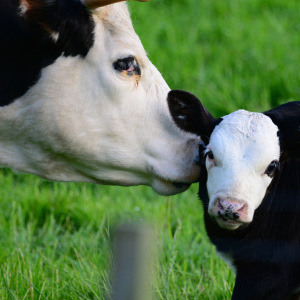
By Vet Jemma Reed BVM&S MRCVS
Many dairy farms have invested in calf machines for feeding milk. Here are a few tips on how you might improve the system you have.
Consider pair housing as soon as possible. It has been shown that calves going onto a machine benefit from paired housing from the start, it encourages problem solving skills – enabling them to find the feeder more readily and reduces their fear when introduced to a group.
Don’t put calves on the machine too early. They should be 7-10 days old before introduction to the machine. Earlier than this can make it take longer for the calves to settle onto the machine and hamper their growth.
Having a lighting level of 600 lux 18 hours on, 6 hours off a day has been shown to improve daily live weight gain (DLWG) by encouraging visits to the trough for starter feed and to the machine for milk. Having a low-level light above the feeding stations overnight encourages visits ensuring maximum milk intakes.
In an ideal world there should be a maximum group size of 10-12 with a maximum 2 week age spread and a stable group per pen with 3.3m² per calf. This reduces the potential for disease and again helps with DLWG as calves are less likely to encounter competition to feed on the machine.
A calf needs an ambient temperature of 15°C in order to thrive and grow. A study has shown that in most UK situations this is not achieved until June. A cheap max/min thermometer can be purchased and be installed in your calf housing to see how your shed is doing. Ways to reduce the impact of the cold include: DEEP, DRY straw bedding, no draughts at calf level, calf jackets, ‘micro environments’ e.g. straw bale ‘dens’ and increasing the concentration of milk replacer or volume to offset the energy used keeping warm.

Don’t leave calibration to when the machine is serviced or when problems are perceived. Aim to calibrate your machine between batches of milk replacer or minimum monthly. Often poor growth rates can be incorrectly linked solely to disease. Inadequate nutrition e.g. underfeeding milk solids or problems with water volume or temperature will in turn make a calf more predisposed to disease. For example, underfeeding milk has been shown to directly correlate with a higher impact of the protozoan parasite Cryptosporidia.
Don’t leave replacing the pipework e.g. that runs from the mixing bowl to the teat until annual service time. Check for residues monthly and replace as required. The machine wash cycles should be set at a minimum twice daily. Dirty pipework in the milk pipeline means the calf is more likely to get scour as it feeds on a combination of milk and bacteria.
One of the single most important things for preventing problems whilst using a calf machine is teat cleaning. The teat is an important trigger point for the spread of disease e.g. Mycoplasma. Newer machines now come with an in-built teat cleaning function after every calf visits the machine. If your machine does not have this function then a teat cleaning protocol needs to be in place. The teat should be disinfected daily. This can simply be that morning and night the teat is replaced with a fresh one and the used one is placed in disinfectant e.g. bleach or Milton.
Use the machine to spot calves early that are ill. A calf that is in the early stages of pneumonia and before looking obviously unwell may drop milk consumption slightly. By using the alarm list and looking at what a calf has drunk the day before or looking at drinking speed/volume per feed allows intervention early.
Finally - key to success is having someone who is dedicated to the role of calf rearing and making sure that someone actually wants to do it! Calf machines are labour saving (in that you don’t need to mix as much milk and fill as many buckets) but it still requires time and attention to detail from a human!